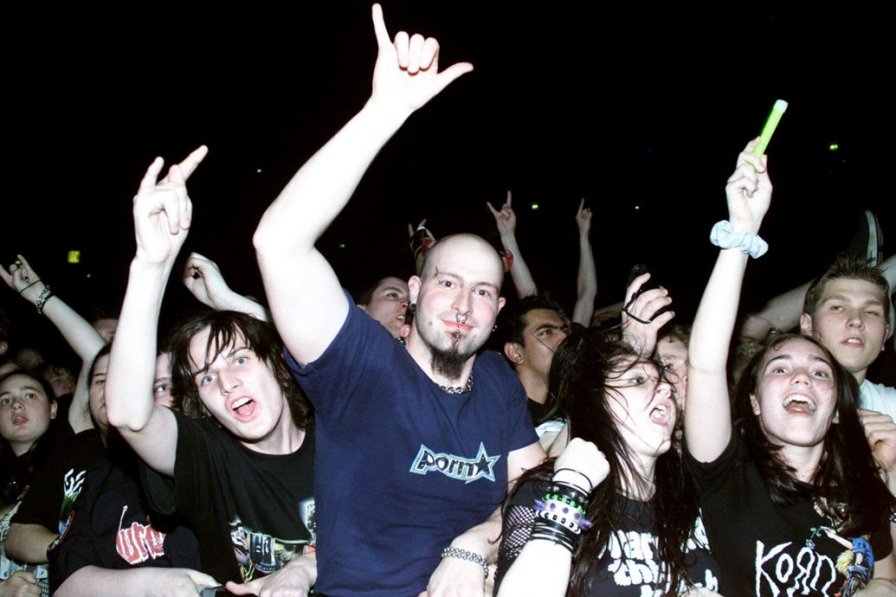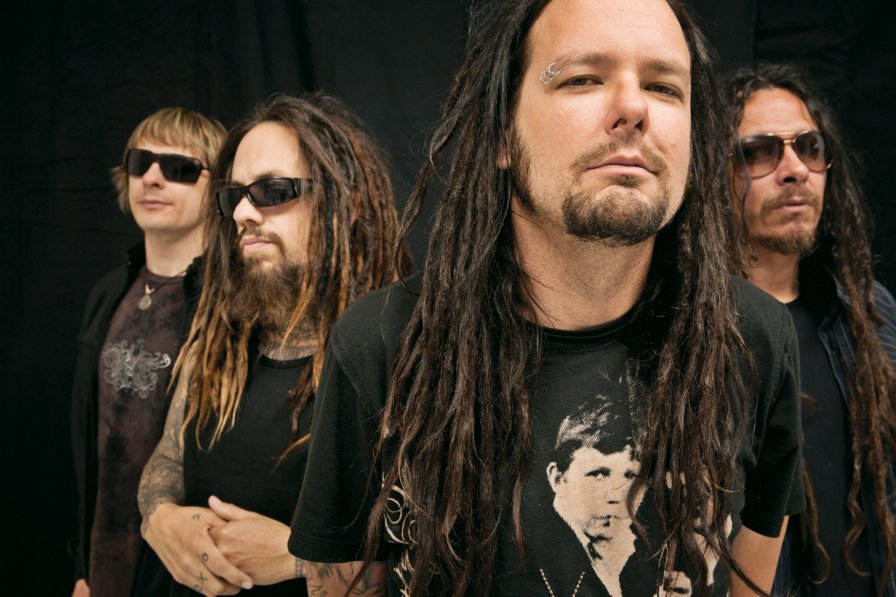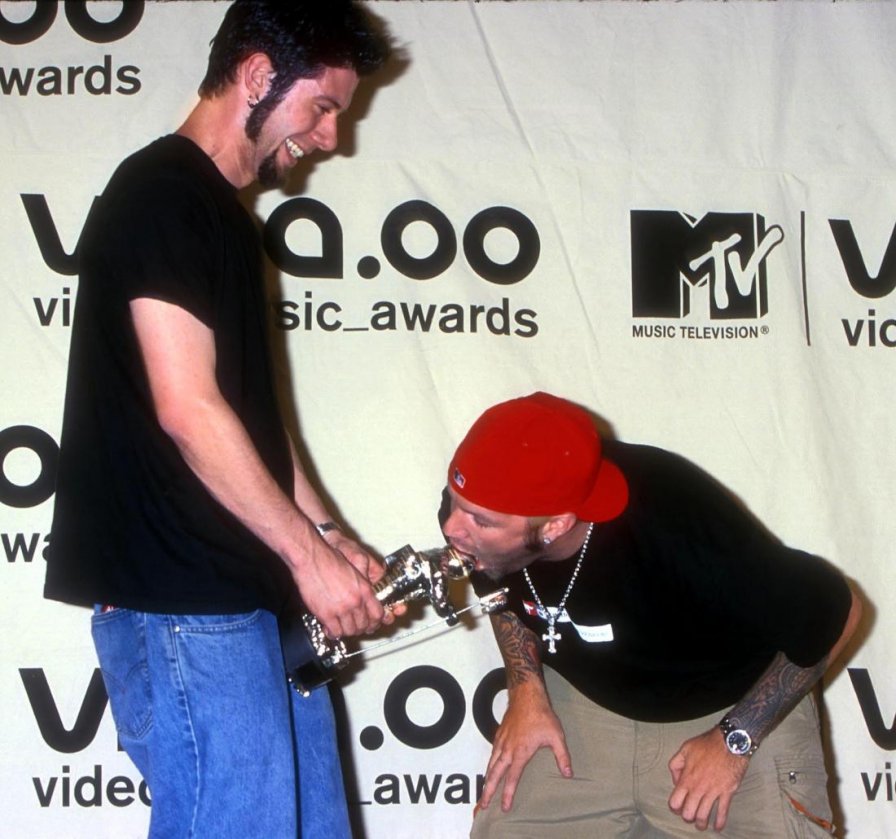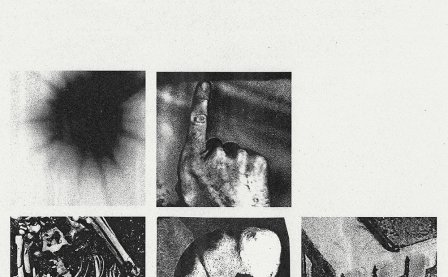If there exists anything like an international language, that language is not love, but misery. Suffering is the common denominator among all peoples, a condition that visits everyone regardless of age, race, nationality, socioeconomic status, or the multitude of other factors that divide and stratify us. And, yet, there’s a fundamental flaw in my metaphor, because though we are all bound in the universal brother-/sister-hood of misery, the pain we find in others is as likely to render them inscrutable as to bring us into fraternity. More and more, we live our lives in isolation, resenting the faces we pass on the street because we can’t find anything in their unhappiness that mirrors our own.
Now I Know Why You Wanna Hate Me

There is, arguably, no musical style or mode on the face of the earth that’s more reviled than nu metal. Three years ago, NME published a listicle declaring it “the worst genre of all time.” Nu metal artists have been criticized for their mercenary business practices, homophobic and misogynist lyrical content, and questionable fashion choices. But, for as much flak as the sub-genre draws from the general music-listening public, that’s but a single flickering candle compared to the luminescent intensity-of-a-thousand-thousand-suns’ worth of hatred it draws from the metal community at large.
Like shoegaze, even the handle “nu metal” seems to have emerged as a pejorative, a poke at artists’ penchant for adopting as their band names groan-inducing misspellings of common words. It’s difficult to determine when exactly the term came into common usage, but it appears to be well after bands like Korn and Limp Bizkit had released their landmark records. The slowness of this label to emerge may even have played a role in solidifying nu metal’s bad reputation. As Jack Porter of The Michigan Daily pointed out, “What used to be a descriptor for a specific strain of alternative metal turned into a ghetto for every band that a) plays extremely heavy yet radio-friendly music and b) sucks.” Lack of quality itself has become a defining feature of nu metal.
Yet recent years have born witness to nu metal’s slow resurgence. And not just as part of the ceaseless churning of the internet nostalgia-industrial complex. Several sites that specialize in heavy music have published probing retrospectives on it. SoundCloud lurkers and electronic experimenters are increasingly turning their gaze backwards to the songs that informed their angry suburban youth and folding them into the great democratization of sound that is today’s digital underground. Even first-gen nu metal bands themselves are enjoying a sort of elder-statesmen status in this brave new world.
In approaching this subject, it’s not my intention to give you a history of nu metal; there are quite a few of those already, and many of them are good. I also have no interest in attempting a “critical reappraisal” of nu metal. Much of the music and the aesthetics that surrounded it were ridiculous, embarrassing, and regrettable. What I do hope to accomplish is to examine how this sub-genre became the gutteral, rage-filled voice of a certain subset of early millennials, and I aim to do this by exploring the unique and peculiar role that trauma played in endearing this music to millions of disaffected teens, while also acknowledging the limits to creating an inclusive community through an aesthetic based on personal pain.
Before going too much further, though, let’s establish what exactly we’re talking about. Given the ambiguities surrounding the signifier, it’s a little difficult to define what exactly constitutes “nu metal.” For my purposes, I’m going to hone in on a few elements that I see as definitive.
First, nu metal songs live and die by the groove. While practitioners of more traditional metal offshoots pride themselves on technical skill and pack songs full of sharp, often jarring shifts in tempo and time signature, or endurance-testing stretches of droning repetition, nu metal hews closely to traditional verse-chorus structures that privilege hooks over complexity. That also means that solos, while not totally unheard of, tend not to be the focus (Korn’s cover of Metallica’s “One” is notable for its omission of the song’s lengthy instrumental passages). Nu metal prominently incorporates elements of funk and hip-hop; in fact, much of what would later constitute the first waves of nu metal was often referred to by fans and detractors alike as “rap metal.” But finally, and most importantly for this feature, the lyrics of nu metal songs are centered almost exclusively around the subject of personal pain.
While metal has long been the bastion of misfits and outcasts, it appealed to those disenfranchised masses primarily through fantasy. The violence, the anger, the occult imagery — they allow for a peculiar sort of escapism into a realm wherein the listener can be powerful, dangerous, and unencumbered by the constraints of society or conventional morality (is it any wonder metal’s underbelly is so teeming with white supremacists?). Nu metal punctures this facade of impregnability. While metal’s “true believers” may denigrate nu metal for its amateurish compositions and for its perceived lack of purity (see again: white supremacy), I’d contend that what they find most anathema is the vulnerability it espouses.
Musically, nu metal was an evolutionary endpoint to the more heterogeneous sub-genre of alt metal that rose to prominence in the early 90s. Long before Korn reared its be-dreadlocked head, a more commercially viable aesthetic known as “groove metal” was attracting artists from a variety of “legit” backgrounds, including death (Sepultura, Fear Factory), thrash (Robb Flynn of Machine Head), and noise rock (White Zombie). The virtuostic funk of Primus and the austerity of Helmet were both key influences, as well as the parade of pioneer artists who had previously dabbled in hip-hop, from Anthrax up through Rage Against The Machine.
Thematically, nu metal was enabled by grunge rock’s radical shift toward interiority. Grunge bands largely eschewed political topics (in their music, at least; many artists used their bands as platforms for activism in other ways) and instead turned their gaze inward, maintaining an obsessive focus on the suffering and disaffection of their (often dreamy) frontmen. Along with other popular alternative metal acts like Nine Inch Nails and Marilyn Manson, they built their audience through their “authenticity.” They sang about “real shit” that spoke to the experience of disenfranchised kids everywhere.
That desire to speak to something real was front-and-center in the mind of producer Ross Robinson, the man who can, in many respects, be viewed as the architect of nu metal. “I wanted to work on something that was so deep and so real, you couldn’t deny it,” he told Decibel.
And with Korn, he found exactly what he was looking for. “I think [Korn] was the first emotionally-driven subject matter expression with heavy sounds. The first of its kind in the history of metal to be open and honest and fearless with incredible amounts of vulnerability. Metal was never vulnerable.”
“Daddy” Issues

In 1994, when Korn released their self-titled debut, there was nothing out there that sounded anything like them. The Deftones may have come first, but Korn beat them to market by about a year. Stripped-down, Helmet-like riffs were plentiful, but they took on a whole new shape and significance when paired up with the wet, solid thuds of Fieldy’s bass. It lent a funkiness to the music that didn’t belong to rock and certainly didn’t belong to metal. But it was singer Jonathan Davis who would command most of the conversation.
The press surrounding Korn’s early records dredged obsessively into the biographical details of Davis’s lyrics. His songs plumbed the depths of his struggles with addiction, his inability to connect with romantic partners, the abuse he suffered as a child, and his isolation from his peers. “Clown” details a violent encounter with a skinhead during a show in San Diego, with the song’s titular figure acting as a stand-in for every jock or bully who ever took a swing at you or shoved you into a locker. “Faget” centers around Davis’s confusion over his own sexual identity as a teenager. An isolated new waver in frilly clothes and makeup, Davis was an easy target for physical and psychological bullying by not only his classmates, but even his teachers. The desperation and self-loathing with which he spits out his declaration, “I’m not a faggot,” at the song’s conclusion betrays a child’s anguish scabbed over into adult dysfunction. It also establishes a genuinely problematic (as opposed to #problematic) relationship with queerness that, unfortunately, would collapse into outright offensiveness within a few albums. Still, it’s not a wonder that Korn and other nu metal bands were able to reach an audience the old guard could not. Most 14 year olds aren’t conversant in Nordic folklore or the writings of Aleister Crowley, but probably every dude on the planet has been called a “faggot” by someone who could conceive of no more hurtful or dehumanizing epithet.
Yet the entire buffet of squalor and human suffering that was Korn’s self-titled debut was a mere amuse-bouche to “Daddy,” the final track of the album. Like the band’s breakout single “Blind,” “Daddy” started its life as a song from Davis’s previous group, Sexart. In its original incarnation as “Follow Me,” the song unfolded wholly from the perspective of a sexual predator trying to lure a child into his grasp. When Korn went to re-record it, Davis rewrote the chorus in order to incorporate the perspective of the victim, as well. The fact that Davis was, himself, the survivor of sexual assault as a child played a crucial role in the way that the audience connected with the band. Many fans thought, for years, that Davis’s father was the perpetrator, despite the singer’s attempts to set the record straight in interviews that it was actually a female friend of the family who used to babysit him. The lyrics themselves seemed to intentionally muddy this distinction, though, implying an incestuous relationship between predator and victim, implying that the mother figure actually watched it happen.
The emotional core of the song, Davis insists, is not just the rape itself, but the fact that his parents wouldn’t believe him when he told them what was happening. “I scream/ No one hears me/ It hurt/ I’m not a liar,” Davis shrieks, able to be heard at last, but far too late to help that scared, powerless kid left alone in the hands of an abuser. Splayed out for a grotesque nine minutes, “Daddy” is a punishing listening experience. On Davis’s final iteration of the chorus, he loses all control and breaks down sobbing and hurling curses at his rapist. The last four minutes of the song are just Davis crying over an improvised studio jam by the band, who were reportedly taken completely by surprise at their frontman’s spontaneous outburst. Even at the height of my Korn fandom, I almost never listened to “Daddy;” it was too private, too intimate, too much for me to take on in the name of enjoyment.
“Daddy” was only the most explicit iteration of a theme that dominated Korn’s early output: that childhood’s idyllic facade was but a thin tissue concealing corridors of unspeakable horror. Korn’s songs found sinister undercurrents in nursery rhymes and games of hide-and-go-seek. The iconic cover art to their debut depicted a young girl in a school uniform sitting on a swingset, her hand held over her eyes to shield them from the sun, straining to make out a figure standing off-camera, casting an ominous shadow in her direction. These were the demons that would populate this new metal’s hell. Real pain. Real terror.
But if there is anything pure or healing or worthy of enduring to be found in nu metal, it is this: a young man took the worst thing that ever happened to him and transformed it into almost 10 minutes of yowling bile and fury, and in doing so, he gave voice to millions of angry, confused, isolated kids all over the English-speaking world.
Cookies and (Jonestown) Tea

The trauma that Davis endured in his youth was baked, not only into Korn’s identity, but also into the fabric of nu metal as a whole. Korn had opened up a space within heavy music to address feelings and experiences that had no other acceptable public outlet. Trauma, and sexual trauma in particular, became the very province of nu metal.
Machine Head had been a successful groove metal band (and prior to the nu metal explosion, Roadrunner’s top-selling artist) for six years before teaming up with Ross Robinson to record their third album, The Burning Red. Despite some interesting experiments, the record signaled an unmistakable detour into nu metal. Amid the
Otep Shamaya plumbed similar territory on her band’s debut EP and LP, with songs like “Filthee” and “Jonestown Tea.” The latter paints an explicit, stream-of-consciousness portrait of incest and the accompanying feelings of anger, shame, and confusion. An openly gay woman, Shamaya was a bit of an oddity in the world of nu metal, but not as much as some would have you believe. While it’s absolutely true that straight white cis men dominated the nu metal landscape, women were actually better represented in the sub-genre than in metal as a whole (I know, I know, not exactly a high bar to clear). Kittie is probably the best known all-female band of the era, but Stockholm’s Drain STH also made some waves stateside thanks to their placement on Ozzfest in 1998. Coal Chamber, Mindless Self Indulgence, Guano Apes, and Evanescence all sported women in their rosters. For whatever reason, despite its well-documented chauvinism, nu metal seemed to offer more hospitable conditions for women than the general metal environment, a fact also attested to by the relatively robust presence of women in the audience.
While sexual abuse was a common thread linking the work of a number of nu metal artists, other forms of trauma played a role as well. System Of A Down wrote songs about domestic abuse and losing loved ones to suicide. Mudvayne’s major label debut plumbed feelings of abandonment. Even nu metal’s top punching bag Limp Bizkit built their band’s narrative around the notion of trauma, albeit trauma of a questionable nature.
In the years that have passed since the early 90s, Limp Bizkit have become a kind of synecdoche for all that was garish and lunk-headed in nu metal. It’s easy to forget, then, that when Three Dollar Bill Yall$ came out in 1997, frontman Fred Durst was working overtime to sell himself as another sensitive soul. In a (hilariously awkward) interview with Rolling Stone’s Lorraine Ali, Durst declared, “My whole record is about my girlfriend who put me through the ringer for three years and my insecurity about it.” Breakup songs have been a staple of rock & roll for as long as there’s been rock & roll, but Durst painted his suffering at the hands of the fairer sex as on-par with those of Job. He claimed to be “celibate” at the time of the interview and still reeling from the indignities his former partner had dealt him. “I want everybody to be thinking I’m having the time of my life, but I’m single and miserable. I’m lonely. I’m experiencing the best things in my life, with no one there to share them. I’m a hopeless romantic.”
This narrative of Durst as the wounded romantic became integral to Limp Bizkit’s identity the way that Davis’s trauma was to Korn’s, and it informed much of the conversation around the release of their star-making sophomore album, Significant Other, thanks in part to its lead single, “Nookie.” MTV’s Teri Vanhorn noted that the song was “one of several… that were inspired by a failed relationship,” and Durst happily filled in the blanks: “It’s about my ex-girlfriend, how she treated me like sh— , and I couldn’t leave her, wouldn’t get over it… She screwed my friends and used me for my money.” In “Nobody Like You,” Durst (alongside Davis and STP frontman Scott Weiland) sketches out his one-time lover’s malevolence in no uncertain terms: “You like to see me cry/ It’s already a proven fact/ That you hate and you wait/ On me to die.”
There’s a danger in accepting Durst’s narrative of romantic trauma at face value, though. While Durst has as much reason as the next person to resent an ex, his sense of self-righteousness allows him to sneak in some pretty ugly shit under the guise of “speaking from the heart.” In his amusing reflection on the band for Slate, Jonah Weiner explores one of the darker paradoxes laid bare by Durst’s unreflective embrace of aggrieved masculinity:
On Significant Other’s “Don’t Go Off Wandering,” he berates a girl for “mentally molesting” him. More precisely: She “won’t let me inside” and has left him “stuck with my dick in my hand.” This is scary stuff — it takes a true creep to turn a case of blue balls into a self-righteous rant. But what do we make of the fact that, four songs later, on “No Sex,” Durst bemoans his encounter with a girl who “let me dive right in,” whimpering and fretting about their “dirty sex” like an abstinence coach after a one-night stand? If a girl doesn’t give it up, Durst whines. If she does, he whines some more.
Limp Bizkit gave an early indicator of nu metal’s potential to reinforce the listener’s view of of his- or herself as a victim, without acknowledging the degree to which their actions and attitudes contribute to the victimization of others. This is a key factor in why the genre is so difficult to defend today. In the matter of just a few years, a musical mode that had the potential to give shrieking voice to the voiceless turned into a handy tool for tuning those voices out.
N 2 Gether Now?

As we’ve seen, nu metal’s blunt and unsophisticated focus on personal pain lent the sub-genre its potency and endeared it to kids who wanted something loud and angry to scream along to. In its purest and least adulterated form, it provided a means for those who suffered in silence to exorcise their demons, either directly or vicariously, through music. It’s no surprise, then, that this music acted as a kind of binding agent for teenage freaks and outcasts in need of a surrogate family. Vice’s Kate Hutchinson reflects on the critical role that nu metal played in her growth:
In the year 2000 I was 12 going on 13, hurtling towards periods and adolescence, and trying to make sense of what all these new feelings were. Mostly, it was white-hot hate. I hated my father for choosing booze over his daughter, and I hated my mother for moving me to a different town so that she could get a better job and raise me as a single parent.
Through nu metal, she found a release valve for all the negative feelings she was experiencing and connected with others in the same boat. “I found a gang: We’d sneak out to the Oast House in Rainham and sit outside drinking gas station vodka in our Coal Chamber hoodies; or later, sneak into the Manor Club in Chatham, where snakebite would slosh over our heads as people screamed: ‘The toxiceeeeteeey of our ci-yer-ty.’” This was a common experience for kids growing up in the late 90s/early aughts. Some who were attracted to nu metal came from bad situations — broken homes, abusive families, poverty. Others were just angry and couldn’t really figure out why. The communal experience of purging our pain and hatred at a concert, of partaking in the sacrament of the mosh pit, helped to build a makeshift family where once there had been only isolation.
Yet, while nu metal’s intense focus on individual suffering helped kids in a bad spot connect with each other, it also had a kind of narrowing effect on one’s perceptions. Korn and some of the artists that followed in their footsteps began with a singular focus on particularly traumatic events. I’d argue that this particularity was empathy-building (or, at least, had the potential to be empathy-building) among fans. Most people cranking Korn’s self-titled album had not been sexually abused themselves, but the rendering of Davis’s experiences in such emotionally excruciating detail couldn’t help but open us up to empathizing with his condition. As nu metal grew and attracted a bigger audience, that particularity was gradually replaced with a more generalized anger against unspecified aggressors or authority figures. Songs like “Daddy,” “Five,” or “Filthee” elicited compassion from their audience, as well as anger. Limp Bizkit’s “Break Stuff,” Slipknot’s “Surfacing,” and Linkin Park’s “One Step Closer,” by contrast, only sought to reflect and magnify the listener’s own sense of anger and victimhood while placing no demands that the audience consider experiences apart from their own.
The sub-genre’s solipsistic tendencies were also likely exacerbated by its overall lack of political focus. I would never argue that participation in any musical movement made fans (or even artists) better or worse people, but there were artists to be found within punk, hip-hop, or various other musical subcultures that, at the very least, tried to present their audience with difficult truths that had the capacity to broaden the listener’s horizon, and that called on the listener to reach outside of themselves and think about societal problems. Admittedly, some voices within nu metal did seek to illuminate larger social or political issues through explorations of their own personal suffering. Otep brought a confrontationally feminist perspective to their music. In addition to the issue of sexual assault, songs like “Menocide,” “Blood Pigs,” and “The Lord Is My Weapon” took on body issues, gender discrimination, and religious persecution. System Of A Down attempted to use their band as a platform for drawing attention to the Armenian genocide perpetrated by Turkey during the First World War and would eventually turn their gaze to America’s war on terror, post 9/11.
More often, the focus of nu metal artists on their own suffering actively precluded consideration of the other. Case-in-point: Korn’s “All in the Family” with Durst, a song that basically amounts to about five minutes of two bros ineptly battle-rapping middle-school-level gay jokes at each other. If “Faget” established Davis’s complex relationship with his sexuality (Davis, convinced by all the ridicule outside intervention that he might actually be gay, experimented with boys in high school and found the experience “sickening”), “All in the Family” reduces that complexity to nil. There is supreme irony in the fact that Davis, who was so traumatized by the homophobic slurs leveled at him by kids he went to school with, was unable to conceive how tossing around those same slurs as a joke could reinforce the attitudes and behaviors that caused him such torment.
Women, likewise, were quite often the target of a song’s spleen, rather than part of its intended audience. Durst’s un-nuanced rage directed at his former romantic partners, while potentially therapeutic for anyone going through a bad breakup, reeks of the kind of red-pill machismo that most people would come to associate with the band. Critics of Limp Bizkit seemed to find all the justification that they needed when one of several reported gang rapes at Woodstock ‘99 occurred during Limp Bizkit’s set, while Durst refused to try and calm the crowd. Actions that heinous are a lot to lay at an artist’s feet, but it’s not hard to see the appeal Durst’s lyrics might have to such people, presenting, as they do, a world where women are spoken of only as conniving bitches or as objects to be lusted after and later dismissed as sluts.
Casual homophobia, general misogyny, and bitch-done-me-wrong self-righteousness would also remain a persistent thread throughout the life of the sub-genre, and would gradually filter into the successive styles that replaced it.
This sense of nu metal’s transformation from haven-for-outcasts to soundtrack-for-meathead-jocks was not lost on the artists themselves. In discussing his decision to end Limp Bizkit, Fred Durst stated, “The irony was, [our band’s] sound was so ferocious that bullies themselves would embrace Limp Bizkit. So, it was uneasy for us to see the people we really hated participating and being fans of the music, alongside the people we were sort of fighting for and standing up for.” Leaving aside the question of who, if anyone, Limp Bizkit’s music was “standing up for,” this phenomenon is not so strange, in and of itself. Better bands than Limp Bizkit have watched their audience expand to include the kind of people they themselves despise. Still, one can’t help but marvel at Durst’s blindness to the degree to which he and his fellow artists had laid out the asshole welcome mat.
Epilogue: Insulated Memories

On reaching this juncture, I feel like I should have something stern and wise to say about my subject, something that will encapsulate its brilliance and its folly, leaving you feeling like you’ve come away with a fresh and startling understanding of why any of this was significant. In lieu of that, I’ll leave you with this.
It’s 2001, and I am 18 years old. I am attending Ozzfest, my first concert. I am standing somewhere on the grounds of what is now the First Midwest Bank Amphitheater, which at the time was called The Tweeter Center, but which I and every other resident of the Chicago suburbs will always refer to as The World Music Theater. I had arrived when the park first opened up with a group of friends, and together we had witnessed four-song sets by American Head Charge, Drowning Pool, and Otep (who fucking killed, btw). Still to come are mainstage acts like Disturbed, Slipknot, Black Label Society, Marilyn Manson, and Black. Fucking. Sabbath. Yet next to Sabbath, the band I am most excited to see is an upstart group from my home state called Mudvayne.
Mudvayne’s close association with fellow Midwesterners Slipknot drew comparison between the Korn/Limp Bizkit patronage of years prior. They shared their benefactor’s flare for theatricality, as well as their blistering heaviness, but they injected their virulent screeds with a proggy sensibility somewhat reminiscent of Tool. The band arrives on stage in some variation of their LD 50 attire. Lead singer Chad Gray, known at the time as “Kud,” is done up in silver facepaint with black accents around his eyes and mouth, electric blue hair gel, and a pair of baggy overalls. They rip into their set, playing “-1,” “Death Blooms” (my favorite song of theirs at the time), and their smash single “Dig.” The crowd goes insane. I’m instantly swallowed by a sea of bodies and transported from one end of the crowd to another, as though I’m traveling through the digestive system of some writhing, sweaty beast. The band concludes their set with “Nothing to Gein,” a song about notorious Wisconsin killer Ed Gein.
For years, in my memory of that afternoon, Gray introduced the song by saying, “This is a song about a guy who never had a chance.” Gein has been the subject of probably dozens of metal songs, a real life boogeyman whose horrific actions boggle the imagination. Here was a person who saw something pitiable, something human in him. Through this lens, the song took on a new dimension. Its prurient details lost some of their brazen shock value and instead felt isolating, imprisoning. More than just an arbiter of atrocity, Gein was also a frightened boy locked in a waking nightmare created by the mother who fucked him up then left him alone. A ghost haunting the decaying scraps of his own life.
While researching this piece, I found footage of the very performance that I witnessed that humid summer day. Revisiting it, I was shocked to discover that Gray’s actual intro to the song was more along the lines of, “Where we come from, people try to take things away from us… This song is about a motherfucker that never gave a shit about nothing.” What had appeared to me, at first, like a statement of radical empathy was revealed years later to be an expression of radical narcissism. A man who dug up corpses, murdered women, and made clothing from their skin was, in Gray’s estimation, just another dude following his dreams. “Couldn’t we all learn a little something from him?” He seems to imply.
Perhaps this is a fitting encapsulation of nu metal as a whole. It constituted an outlet and support network that was vital and life-giving, but looking back on it with the distance of age and with experience, it was a lot more trite and self-involved than I remembered. Nonetheless, when my friends and I were lonely nerds flailing our way through our teenage years, grappling with a boiling rage and impotence that we could neither comprehend nor explain, nu metal was a lifeline. Whether or not it holds any relevance now, it meant everything in the world to us then, and that is surely enough.
More about: KORN, Limp Bizkit, Marilyn Manson, Mudvayne, Nine Inch Nails



